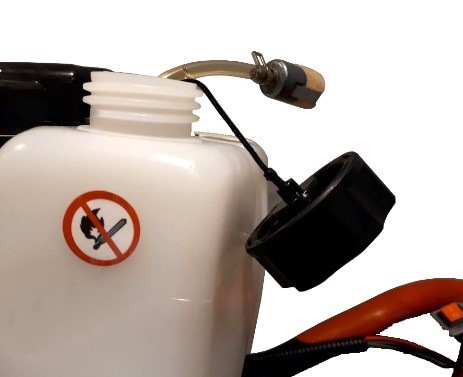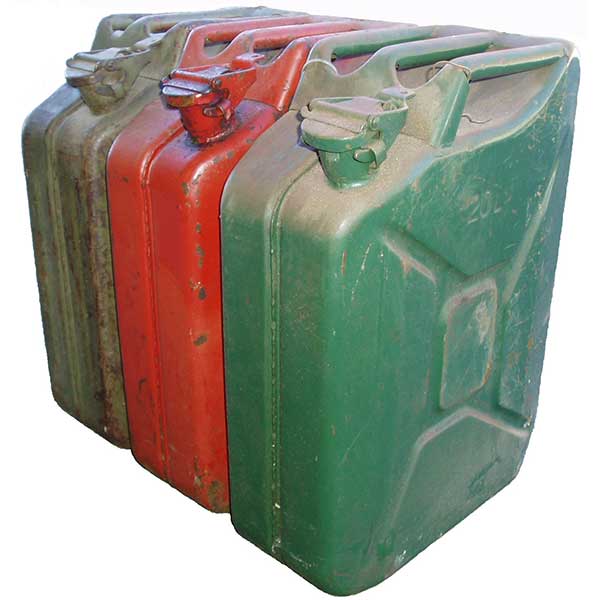My Lawn Mower Won't Start - Possible Fuel Issues?

My Lawn Mower Won't Start
If you’ve had problems starting your petrol lawn mower, you’ll know just how frustrating that can be.
We will run through some of the basic checks that we need to go through to make sure your mower starts first time, every time and help you fix your mower.
This time we will concentrate on the fuel system that may be a cause of the issue.
Safety First
Petrol is highly flammable and should always be handled with care.
Always fuel and de-fuel in a well-ventilated area and keep fuel away from any sources of ignition.
Always wear appropriate Personal Protective Equipment.
Petrol Degrades
Petrol degrades over time - additives in the fuel break down and can form sediment blocking the fuel filter and fuel lines.
Alcohol-based octane boosters in the fuel can evaporate, making the petrol less combustible and water droplets can form as a result of condensation and mix with the petrol.
So if you’ve left petrol in your mower over winter and are having trouble starting your lawn mower then you’ll probably need to drain the fuel tank.
You will need to syphon the fuel from the fuel tank or clamp the fuel line from the fuel tank to the carburettor and remove the fuel line allow the tank to drain into a suitable container.
When removing the fuel line, a small amount of fuel will leak from the tank/fuel line when you first remove it so place plenty of absorbent paper towels down before removing the fuel line to catch the few drops that will leak.
Once drained, check the fuel for any signs of debris or deposits and shine a torch into the fuel tank to see if there is any sediment left in the bottom of the tank (NOTE: wear a face mask to avoid breathing in petrol fumes when inspecting the fuel tank).
A handy tip for removing sediment or debris from a fuel tank is to use a turkey baster or similar to suck it up.
However, if the fuel tank is caked in sediment, it’s probably safer to replace the fuel tank.
Fuel Filter

Your mower will have a fuel filter. This is placed in the fuel line and contains a gauze to filter out any dirt or debris and trap it in the fuel filter to hopefully stop it entering the rest of the fuel mower and the carburettor.
Locate the fuel filter - it will either be in the fuel tank which will require you to use a hook to gently pull it from inside the fuel tank and out through the fuel filler cap or it will be placed in the fuel line and visible from the side of the mower.
Visually inspect it for any signs of it being clogged or dirty. If it is clogged or dirty then replace it.
If the fuel filter seems fine then it is perfectly safe to reuse it.
Draining Remaining Fuel
You’ll need to drain the remaining fuel from the carburettor and fuel line.
Locate the carburettor float bowl and undo the drain plug. Again drain the remaining fuel into a suitable container and wipe up any spills immediately (NOTE: if you’ve clamped the fuel line you may need to release the clamp to allow the fuel to drain freely).
Undo the bowl release bolt on the bottom of the float bowl and remove the carburettor float bowl. Take care to not lose the float bowl sealing washer.
Lawn Mower Inspection Time
Inspect the float bowl for dirt and debris and, if required, clean the float bowl with an aerosol carburettor cleaner.
Next, you’ll need to inspect the carburettor float and float piston.
Remove the float hinge pin to allow you to remove the float and give you access to the float piston. The float piston sits on top of the float and rises and falls to allow fuel into the float chamber.
If this is damaged, it will not be providing the carburettor float bowl with the correct amount of fuel to allow the lawn mower to run and will need replacing.
If the float and piston seem to be fine, then you can replace them back into the carburettor.
Next, you’ll need to inspect the bolt you used to remove the carburettor float bowl. This bolt contains the fuel jets which control the amount of fuel and air entering the carburettor to allow your mower to run smoothly.
Clean
Poke a thin piece of wire or a needle through the outer jets and then down the jet in the middle of the bolt to clear out any small pieces of debris and, if needed, give a quick clean with the aerosol of carburettor cleaner to remove any final bits of debris.
Inspect the float bowl sealing washer and if it is perished or damaged then replace.
Once this has been done, then replace the float and float bowl, taking note that there are a shallow end and a deep end of the float bowl. The shallow end should be placed where the hinge of the float goes.
Replace
Inspect the fuel line from the fuel tank to the carburettor and, again, if this is damaged or perished, replace with a new fuel line.
Reconnect the fuel line to the carburettor and fuel tank and fill the fuel tank with fresh fuel.
Refuel

It is advisable to fill the lawn mower tank slowly, stopping occasionally to check for leaks just in case something hasn’t been fitted correctly or been tightened properly as it’s easier to clear up a small fuel leak rather than an entire tank full of fuel.
Allow a few minutes for the fuel to refill the fuel line and float bowl.
If the lawn mower has a priming bulb, then prime the engine with the priming bulb and follow the starting procedure as laid out in your user manual.
If a fuelling problem has been an issue with your lawn mower not starting, following these simple procedures should now have cleared that problem and allow your lawn mower to start and run perfectly.

